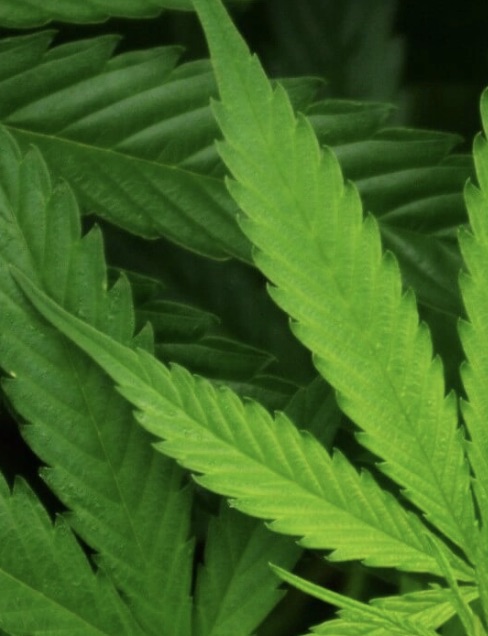Summer is a great time to log some serious time at the beach or pool or have a cook-out with friends and family. The nice weather entices us by its warm embrace and in turn, we want to soak up the sun and remain outside for as long as possible, but is there such a thing as too much sun?
This Fourth of July, when you’re outside enjoying the sun with family and friends, it’s important to know how the sun is beneficial and how it’s also harmful. There are studies that have shown the ever-increasing need for protection from harmful UV rays, however, studies have also shown there are benefits to getting a certain amount of daily unprotected sun exposure. Sounds contradictory right? Well, let’s take a look at how the sun can be both your friend and your enemy this summer.
Catching Some Beneficial Rays
It feels good to be out in the sun all day and there is a reason why! The sun provides us with vitamin D, an important nutrient that is extremely beneficial to both our physical and mental health.
Vitamin D, the “sunshine vitamin”
Perhaps the most well-publicized reason for spending some time out in the sunshine is that sunlight helps the body to produce vitamin D. However, few of us are actually getting enough sun and vitamin D. In fact, over 40% of Americans suffer from a vitamin D deficiency. Those deficient in vitamin D may suffer from brain fog, a weakened immune system, and fatigue. On a grander scale, a vitamin D deficiency can lead to osteoporosis, as vitamin D plays an essential role in bone health by aiding the body’s absorption of calcium.
Vitamin D’s role in mental health
In a world where depression is the leading cause of disability worldwide, it is not surprising that nutritionists, naturopaths, doctors, nurses, and others have taken interest in the potential nutritional deficiencies and treatments. Vitamin D has gained significant attention on how it impacts mental health.
Researchers have pointed out that a lack of vitamin D can play a role in treating depression and seasonal affective disorder (SAD)–not to mention schizophrenia.
Light therapy, exposure to artificial light during times of the year when the sky is dark and gloomy, can improve symptoms associated with SAD as well as other mental health issues. The light therapy enhances the absorption of vitamin D, which may be lacking when sun exposure is limited.
Eczema
Eczema, an inflammatory skin condition that results in dry skin or a red, itchy rash, is another issue compounded by insufficient amounts of vitamin D. Eczema is associated with both lowered immune function and dysfunction of the outermost layer of the skin. Vitamin D works to improve both. Additionally, while sun exposure may seem like a counterintuitive treatment option for eczema since too much sun can produce red, itchy skin in and of itself, UV therapy has proven to alleviate symptoms associated with inflammatory skin diseases. Not only does it allow for vitamin D production but releases nitric oxide, an anti-inflammatory, into the bloodstream.
That said, those with eczema should shy away from too much sun exposure for fear of overheating, which can only exacerbate symptoms associated with eczema.
How to obtain vitamin D
Unfortunately, few foods contain enough vitamin D to help you reach your daily dose. Therefore, sunlight is the quickest way to achieve maximum absorption. The recommended daily dose of vitamin D for an adult is between 800 to 1000 IUs. One study found adults who were exposed to the sun for a small amount of time and without using any sunscreen ingested between 10,000 and 25,000 IUs of the vitamin through the skin.
That is in no way meant to advocate sunbathing or doing yard work without any sort of sun protection, however, there is a way to ensure you get some sun – and a sufficient amount of vitamin D – without doing major harm. For instance, expose yourself to the sun around midday, for approximately 15 to 30 minutes three times a week. This is when the sun is strongest, and you won’t need to stay outside for long, especially if you wear a bathing suit or a tank top and shorts. The more skin that’s exposed, the more surface area you have to produce vitamin D. Also, skip the sunscreen for those 15 to 30 minutes. Sunscreen with SPF 30 or higher is made specifically to block out UVB rays, which are the type of UV rays vital for making vitamin D.
Staying Out of the Sunlight
The reasons for staying out of the sun are highly publicized and with good reason, as they can have serious repercussions on your health.
Sunburn
Sunburn is a common affliction associated with too much sun exposure. This can either be due to staying out in the sun too long or due to not taking adequate sun protection measures, be it through lack of continuous sunscreen application per the bottle’s instructions or by not wearing sufficient UV protection clothing.
Sunburn typically occurs approximately four hours after being out in the sun too long and can last anywhere from three to five days. Symptoms range from redness, or skin that is tender or warm to the touch, to more severe cases, which can result in blistering and swelling. If the skin does begin to blister, avoid popping them and instead, cover them with bandages.
The best way to treat sunburn, overall, is to stay out of the sun until symptoms subside. Taking a bath in cool water may soothe symptoms, as will cool compresses. Aloe vera and calamine lotion can prove soothing, as can a cream like CBDMEDIC™’s Itch & Rash Relief Medicated Ointment. The active ingredient lidocaine can work to relieve pain and ease any itching or irritation that may occur.
Sun poisoning
Another, more severe byproduct associated with too much sun is sun poisoning. Sun poisoning is a severe sunburn that is accompanied by:
- fever
- nausea
- rash
- dizziness
Again, if sun poisoning occurs, stay out of the sun until symptoms subside. Drink plenty of water, as sunburn brings the body’s fluids to the surface of the skin and can be dehydrating. Also, taking an over-the-counter pain reliever may help reduce inflammation.
But sometimes over-the-counter treatments are not enough. You should seek medical attention if you have a fever above 101 Fahrenheit, are in pain longer than 48 hours, experience a rash or hives, or experience symptoms associated with dehydration, which include:
- dizziness
- vomiting
- chills
- muscle cramping
- headache
- fatigue
Practice Safe Sun This Summer
An interesting duality exists when it comes to sun exposure – it can be both friend and foe. To live your best life this Fourth of July, make sure you’re getting just the right amount of sun exposure and be sure to take measures to protect yourself if you plan to be out in the sun for too long.
In the event you do find yourself having a little too much fun in the sun this Independence Day, turn to CBDMEDIC for relief. For those of you suffering from an eczema flare-up that brief bouts of sunlight couldn’t fix, try Eczema Therapy with its active ingredient of colloidal oatmeal to soothe irritated skin. Likewise, the aforementioned Itch & Rash Relief Medicated Ointment is packed with lidocaine, allantoin from comfrey, and tea tree oil, which has been known to work wonders on minor skin irritations. Find the perfect balance of sun exposure to maximize your time spent outside this summer.



